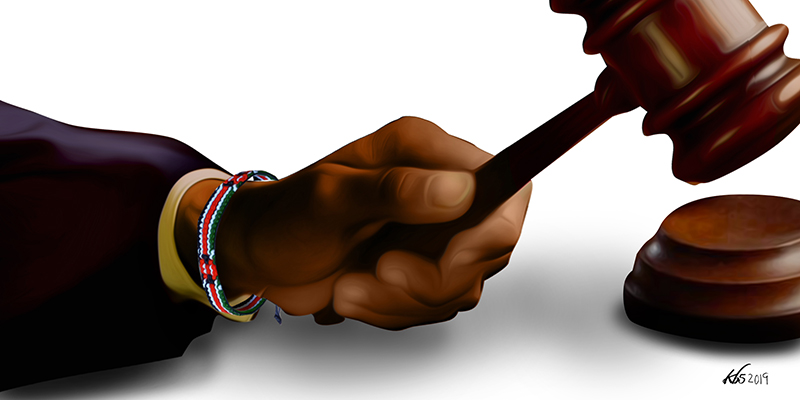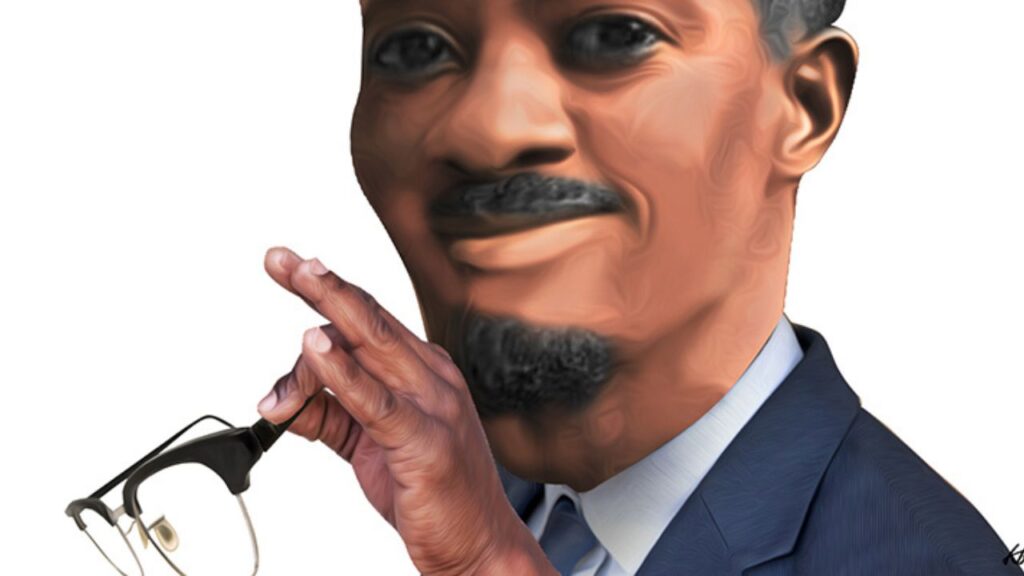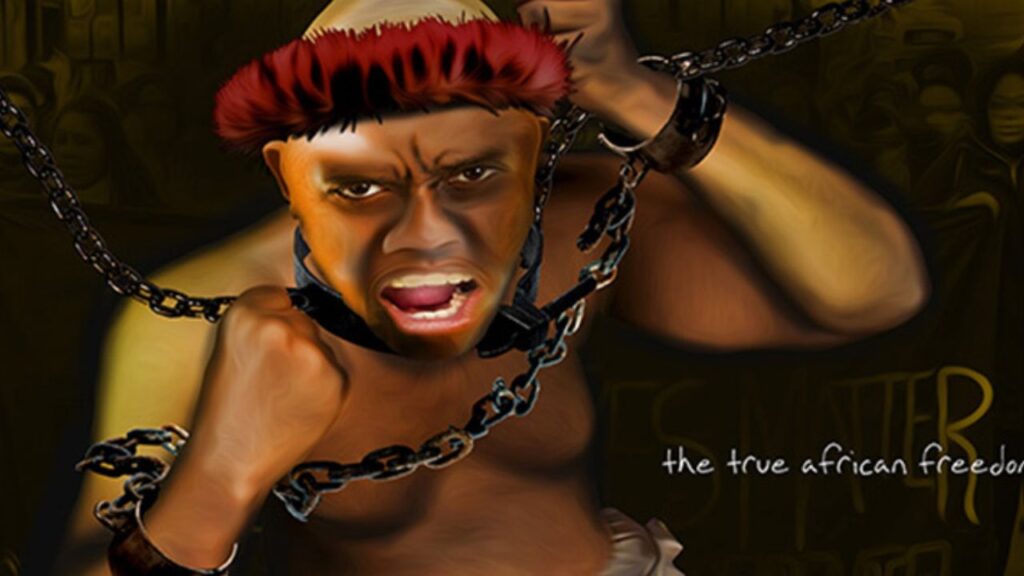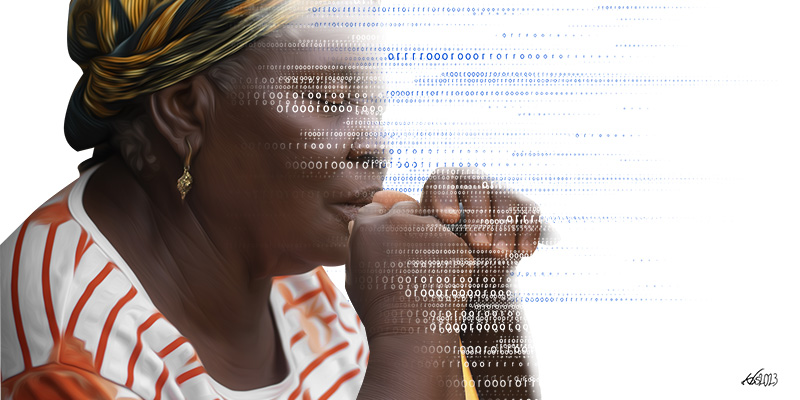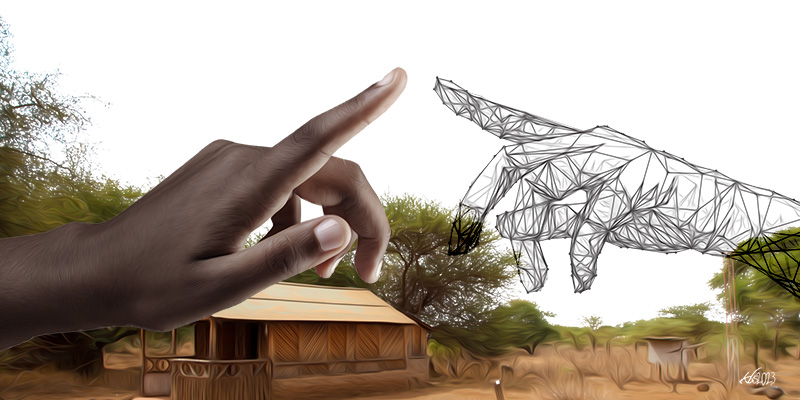As the six Supreme Court judges were adjudicating Kenya’s first presidential election petition in March 2013, Justice Kalpana Hasmukhrai Rawal was waiting for a new president to take office and the newly elected National Assembly to convene so that her nomination as Deputy Chief Justice could move forward. The Judicial Service Commission (JSC) had settled on her appointment after interviewing a shortlist of applicants in February 2013. The Judges and Magistrates Vetting Board had earlier found her to be suitable to continue serving as a Court of Appeal judge. Justice Rawal eventually joined the Supreme Court on 3 June 2013.
Two years later, Justice Rawal became the second Deputy Chief Justice (after Nancy Baraza, who resigned after she was heavily criticised for abusing her authority by threatening a security guard after the guard demanded to search her at a mall) to be embroiled in controversy. In 2015, Rawal challenged a notice that she retire at the age of 70. Around the same time, the then Chief Justice, Dr Willy Mutunga, would announce that he wanted to retire early so that the next Chief Justice would be appointed well ahead of the next election.
In May 2014, Justice Philip Kiptoo Tunoi and High Court judge David Onyancha challenged the JSC’s decision to retire them at the age of 70. They argued that they were entitled to serve until they reached the age of 74 because they had been first appointed judges as under the old constitution.
What seemed like a simple question about the retirement age of judges led to an unprecedented breakdown in the collegiate working atmosphere among the Supreme Court judges that had been maintained during the proceedings of the presidential election petition. During the two years it took the judiciary to address the question of whether judges should retire at 70, as decreed by the new constitution, or at 74, as was the case under the old constitution, three Supreme Court judges openly challenged the authority of the JSC in handling the age issue. When the matter reached the Supreme Court, the intrigues that emerged brought the country’s highest court to its lowest point in its short history.
In May 2014, Justice Philip Kiptoo Tunoi and High Court judge David Onyancha challenged the JSC’s decision to retire them at the age of 70. They argued that they were entitled to serve until they reached the age of 74 because they had been first appointed as judges under the old constitution. Justice Onyancha suddenly abandoned his cause and resigned quietly.
Justice Rawal filed a similar petition in September 2015 when the JSC issued her a notice of retirement. The following month, Dr Mutunga announced that he would retire before reaching the age of 70.
A letter sent to the JSC by Justices Jackton Boma Ojwang, Mohamed Khadar Ibrahim and Njoki Ndung’u on 24 September 2015 threatened a solidarity strike by the three if the commission continued to insist that judges retire at 70. The letter triggered a petition by the chief executive officer of the Law Society of Kenya (LSK), Mr Apollo Mboya, seeking the removal of the three judges from office for insubordination. A JSC committee investigated the allegations against the three judges and elected to reprimand them – but Justice Ndung’u contested the decision in court where it is pending determination.
On 11 December 2015, the High Court unanimously decided that Justices Rawal and Tunoi should retire at 70 – a judgment affirmed by a seven-judge bench of the Court of Appeal on 28 May 2016.
On the same day, Justice Rawal sent an application to the Supreme Court seeking suspension of the decision. She also asked the court to set a date for hearing her appeal. Justice Ndung’u, sitting alone, received the application and granted her requests. She set the hearing date for 24 June 2016, eight days after Dr Mutunga’s planned retirement as Chief Justice.
Dr Mutunga, who was meant to be abroad but had not travelled due to illness, called the file and brought the hearing date set by Justice Ndung’u forward since she had certified the matter as urgent.
On 14 June 2016, three judges recused themselves from hearing the appeal to avoid perceptions of bias. Dr Mutunga and Dr Smokin Wanjala said they did so because they were members of the JSC when the commission determined the retirement age for judges was 70. Justice Ibrahim apologised for his conduct in threatening a strike earlier and voted with the two. Prof Ojwang and Justice Ndung’u took the opposite view, arguing in their dissenting opinions that the different positions the judges had taken on the matter did not mean they would be biased when hearing the appeals. In the event, the Court of Appeal’s judgment on the matter became the final decision on the issue of the retirement age. Rawal and Tunoi retired. Dr Mutunga, too, retired as Chief Justice two days later, thus opening up three vacancies in the top court, but the rift in the Supreme Court would persist until the 2017 presidential election petition.
A last-ditch effort was proposed to save the two judges. It entailed waiting until Dr Mutunga had left office to have President Uhuru Kenyatta name Justice Ojwang as Chief Justice in an acting capacity, according to Platform publisher Gitobu Imanyara. With Justice Ojwang at the helm of the Supreme Court, albeit temporarily, it was expected that Justices Rawal and Tunoi would apply for a review of the recusal decision. A full bench was subsequently expected to hear the case, reverse the Court of Appeal judgment, and allow judges appointed before the adoption of the new constitution to serve until the age of 74.
Competing interests had already begun to play out in the race to replace the Chief Justice and the departing Supreme Court justices. The departures would significantly change the composition of the court, and with it, its posture and prudence.
It was Kenyatta (reportedly fearing the embarrassment of having another of his decisions struck down by the court) who declined to go along with the plan to appoint an acting Chief Justice. When the matter formally came up at the JSC, introduced by acting chair Prof Margaret Kobia, there was uproar. It is against this background that the JSC began its search for a new Chief Justice and two Supreme Court judges.
Competing interests had already begun to play out in the race to replace the Chief Justice and the departing Supreme Court justices. The departures would significantly change the composition of the court, and with it, its posture and prudence. It was no longer in doubt that the pitched battles around the departure of the two judges had demolished any pretence at collegiality in the Supreme Court, with judges openly differing with each other.
A safe choice
David Maraga would emerge as the dark horse in the Chief Justice’s succession race ahead of law professor Makau Mutua and Supreme Court judge Smokin Wanjala. With a combined 13 years as High Court and Court of Appeal judge, Maraga’s public posture was that of a deeply religious and conscientious man – an elder of the Seventh Day Adventists Church who would not work on the Sabbath before sunset. During his vetting as a previously serving judge, he offered to swear on the Bible that he had never taken a bribe. He also famously said during his interview that he would never work on the Sabbath even if an election petition were in progress.
Justice Maraga had served as an inaugural member of the Judicial Working Committee on Elections Preparations (JWCEP) before taking over as chairman. He is regarded as one of the foremost authorities on electoral law, not just because he has written on the subject, but more so because his decisions have never been overturned on appeal. He beat a field of nine finalists to be nominated Chief Justice as a compromise between institutional insiders who wanted stability and the executive, which wanted a pliable person.
In contrast to his predecessor, Justice Maraga appeared to be a safe choice for the establishment. He was as a conservative, unlike Dr Mutunga. He had not been involved in politics and was a judicial insider. The new Chief Justice would also have the 2013 precedent of the Supreme Court to rely on. So safe was he considered to be that Uhuru Kenyatta, while giving a campaign stump speech, deigned to mention Justice Maraga’s appointment as one of the political favours extended to the Kisii community, drawing the Chief Justice’s rebuke.
Just like Dr Mutunga before him, Justice Maraga had no hand in selecting the six judges he was going to lead as President of the Supreme Court. Three were already in place (appointed in 2011) therefore outranking him in experience in the court, and the two new ones were appointed at the same time as he was.
The filing of the August 2017 petition guaranteed Justice Maraga the one case he was certain would be his legacy as a jurist. Regardless of how he was going to rule, the opportunity and chance to do it was a moment that conferred great personal prestige.

Chosen as Deputy Chief Justice was Philomena Mbete Mwilu. She had 32 years of experience in law, serving as a member of the Electricity Regulatory Board and the Energy Tribunal before her appointment as a judge of the High Court and the Court of Appeal. She had also spent considerable time as a legal officer at Jubilee Insurance Company.
Justice Mwilu was notably one of the three High Court judges who had declined to declare the composition of the 2011 Supreme Court unconstitutional for not meeting the requirement that no one gender should constitute more than one-third of any electoral or appointive body.
The third was the slightly graying Isaac Lenaola, whose solid 13 years experience in the High Court, and as Deputy President of the East African Court of Justice enabled him to leapfrog his seniors in the Court of Appeal to the apex court as its youngest member. At the High Court, the judge had distinguished himself as a hardworking head of the Constitutional and Human Rights Division, renowned for its landmark decisions.
Lenaola had also served on the 28-member Constitution of Kenya Review Commission, which collected public views and produced a draft in September 2002, which formed the basis for the new constitution adopted in August 2010. He had been instrumental in negotiating the adoption of vetting of judges and magistrates as a lustration measure to usher in the new constitutional changes in 2010, and had served as the High Court’s first representative to the JSC until 2014. Before joining the bench, he had worked in civil society promoting minority rights.
Conservatives back in the saddle
While Kenyatta’s team was working to change the court’s composition, his rival, Raila Odinga, had forced a negotiation of the electoral law in Parliament. Through legislation and subsequent litigation, the landscape in which elections would be held was significantly altered. The Independent Electoral and Boundaries Commission (IEBC) was disbanded and reconstituted and the electoral law was amended and set out in greater detail. Litigation also settled questions around the audit of the voters’ roll, the printing and procurement of election materials, and the transmission of results.
A case filed by human rights advocate Maina Kiai produced decisions at the High Court and the Court of Appeal that made the polling station central in determining election results. Lawyer Ahmednasir Abdullahi, who would later sign up as one of Kenyatta’s advocates during the hearing of the 2017 petitions, remarked that election-related litigation had been conducted on “an industrial scale”. He had boisterously defended the chairman of the IEBC during the 2013 petition, when he pejoratively referred to the Supreme Court as a young court that was “still crawling”.
“It is good, especially for a young court – which is crawling – it is good for it to show judicial restraint. You will find opportunities later in life where you can express yourself more,” he said, to the roar of laughter in the courtroom.
Ahmednasir’s words carried great weight at the time, considering that he was not only a senior counsel and former chairman of the Law Society of Kenya, but he had also been chairman of the Kenya Anti-Corruption Authority (the precursor to the Ethics and Anti-Corruption Commission) and had played a starring role in forcing a Court of Appeal judge to resign over corruption allegations by providing closed-circuit television evidence of the judge receiving a bribe in a city hotel parking lot. His anti-corruption credentials saw the LSK elect him as their representative to the new JSC that would interview and nominate judges in 2011, including the Chief Justice and the Deputy Chief Justice. His abrasive questioning of applicants won him admirers and foes in equal measure, but it also implanted in the public psyche the possibility that he had an unhealthy stranglehold on the inaugural Supreme Court.
However, the spell he had over the judges during the 2013 election petitions was definitely broken in 2017. Although he had lost the election to continue representing the LSK on the JSC, he was still treated with great deference. When he rose to speak as Kenyatta’s lawyer in the August 2017 petition, his full crop of hair was greying in the middle, and he did not seem to have the same leeway he had enjoyed four years earlier.
After the 2013 Supreme Court disappointment, three-time presidential contender Odinga had publicly declared in the run-up to the 2017 election that he would not petition the courts if his fourth run did not succeed.
Justice Maraga found a Supreme Court that did not wig and only robed in green gowns. However, as the seven justices made their appearance in August 2017 in red robes, white bibs and wigs, it was clear that the conservatives were back in the saddle.
When, however, the opposition decided to head to court after Uhuru Kenyatta was declared winner of the presidential election, it found a prepared bench. On Saturday, 26 August, when the sun had gone down and the Sabbath observed by Seventh Day Adventists had formally ended, the court convened its pre-trial conference to accommodate the Chief Justice’s religious practice.
Justice Maraga found a Supreme Court that did not wig and only robed in green gowns. However, as the seven justices made their appearance in August 2017 in red robes, white bibs and wigs, it was clear that the conservatives were back in the saddle. Where Justice Mutunga – the cool earing-wearing CJ – presided over the court with an iPad and enjoyed meeting young people, his successor was reticent and retiring. Maraga was an old school judge who placed great premium on rules and traditions. Or was he?
Greater vigilance
The Supreme Court had to decide the petition before the expiry of the constitutionally prescribed 14-day deadline, which fell on another Sabbath – the following Saturday. Before the hearing began, the Supreme Court gave the petitioners access to the IEBC servers to verify the results transmitted from the polling stations to the national tallying centre. It also granted the application for a court-supervised scrutiny of the forms used to collate the presidential votes.
The petitioners assembled a veritable team of veteran lawyers, among them Senators James Orengo, Okong’o Omogeni, former Attorney General Amos Wako, Member of Parliament Otiende Amollo, law professors Mutakha Kangu and Ben Sihanya, veteran litigator Pheroze Nowrojee and 28 others.
In 2013, the court had been totally unprepared for the management of electoral disputes, which undermined its ability to interrogate the IEBC’s ICT and voter register failures. Its naivety also exposed it to deception by its own administrative staff.
Kenyatta’s team was led by Fred Ngatia, Ahmednasir Abdullahi, and PLO Lumumba. The IEBC relied on senior counsel Paul Muite, Lucy Kambuni, Paul Nyamodi and Tom Macharia. A good number of the judges – Justices Ojwang, Wanjala, Ibrahim and Ndung’u – had done their pupilage at Waruhiu, Muite and Company Advocates, Paul Muite’s firm.
Just as had been the case during the 2013 petition, the proceedings were broadcast on live television.
Meanwhile, the Judiciary Working Committee on Election Preparations had become a permanent fixture and in 2015 had been renamed the Judiciary Committee on Elections (JCE) and a chief executive had been appointed for it along with research staff. Its mandate was to build on the experience judges had gained in arbitrating the electoral disputes of 2013 and preparing the institution for the next election. The framework for handling electoral disputes was now in place.
In 2013, the court had been totally unprepared for the management of electoral disputes, which undermined its ability to interrogate the IEBC’s ICT and voter register failures. Its naivety also exposed it to deception by its own administrative staff. Perhaps it was the new Chief Justice’s four years at the helm of the JCE that encouraged him towards greater vigilance. The court had even organised a retreat in Mombasa to undergo training in the ICT systems used by the IEBC to enable it to make better decisions.
Additionally, although Odinga was not optimistic about a favourable court decision, his legal team was much better prepared in 2017 than it had been in 2013. He had approached the court, offering it an opportunity to “redeem itself” from its 2013 decision, but was also ready to delegitimise it. Unlike in 2013, his lawyers were conscientious, diligent and fully involved in the scrutiny and document review. The IEBC, on the other hand, was cavalier and would prove to have been poorly prepared compared to the case in 2013.

